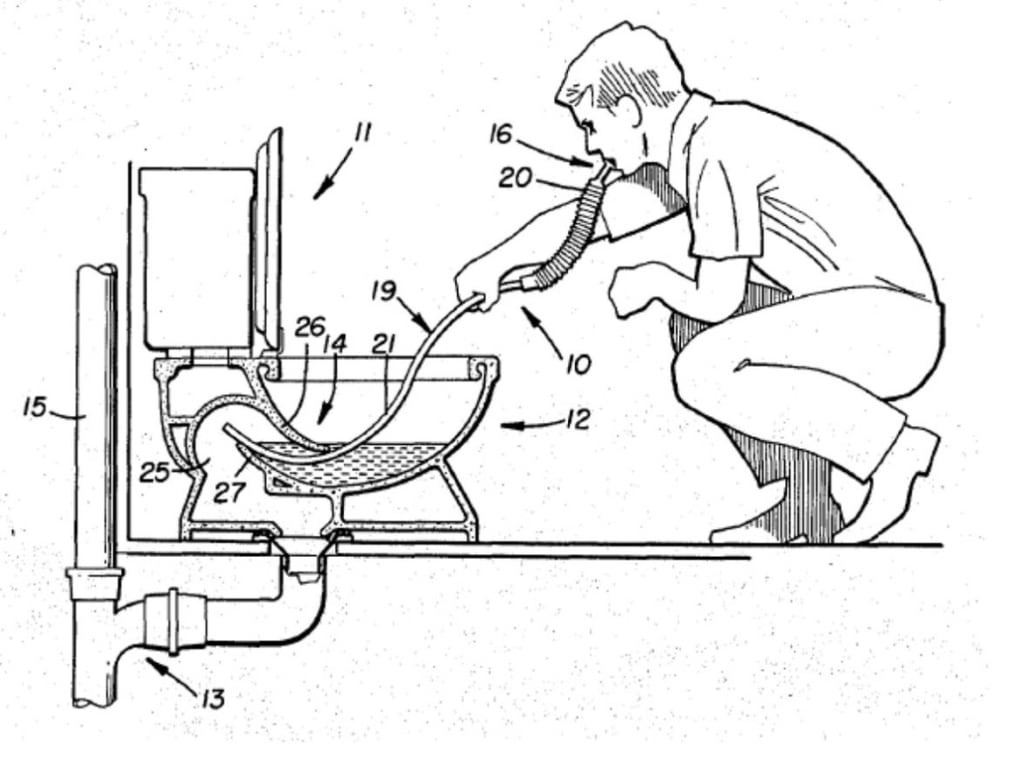The Ingenious Toilet Snorkel: A Lifesaving Invention in the Face of Disaster
Safe or not

The Ingenious Toilet Snorkel: A Lifesaving Invention in the Face of Disaster
In the history of inventive ingenuity, few devices are as surprising and potentially life-saving as the toilet snorkel. Patented in 1982, this unconventional but ingenious invention was designed to help individuals trapped in burning high-rise buildings breathe until rescue could arrive. While it may sound peculiar at first, the toilet snorkel addresses a critical need in fire safety and emergency preparedness, particularly in urban environments where high-rise buildings are prevalent. This blog post delves into the history, design, and impact of the toilet snorkel, highlighting its significance as a tool for survival.
The Problem: High-Rise Fires and Air Quality
High-rise buildings, while offering numerous advantages such as space efficiency and stunning views, also pose unique challenges in emergency situations. Fires in such structures can spread quickly, and the difficulty of evacuating large numbers of people from multiple floors can lead to tragic outcomes. One of the most pressing dangers in these scenarios is smoke inhalation. Toxic fumes and the lack of breathable air can incapacitate individuals long before flames reach them, making it crucial to find ways to provide clean air in such emergencies.
The Invention of the Toilet Snorkel
The toilet snorkel was the brainchild of a creative mind seeking to address the dire need for breathable air in smoke-filled environments. Patented in 1982, this device leverages the often-overlooked reservoir of relatively clean air available in the plumbing systems of buildings. The basic concept involves using the water trap in toilets, which typically contains less-contaminated air compared to the smoke-laden atmosphere in a burning building.
The toilet snorkel consists of a flexible hose attached to a mouthpiece. In an emergency, an individual would insert the snorkel into the water trap of a toilet or other plumbing fixture. The theory is that the water in the trap blocks smoke and toxic gases from entering, providing a temporary source of cleaner air. This simple yet effective solution can help trapped individuals breathe until firefighters or rescuers arrive.
How the Toilet Snorkel Works
In the event of a fire, the individual retrieves the toilet snorkel from its storage location. Ideally, it would be stored in a readily accessible place within each high-rise apartment or office. The individual inserts the snorkel's hose into the water trap of a toilet or sink. The water trap, which is part of the plumbing system, serves as a barrier to smoke and gases. By placing the mouthpiece in their mouth, the individual can breathe air that is relatively free of smoke and toxins. This air comes from the plumbing system, where the water trap acts as a filter. The snorkel provides a temporary solution, allowing the person to breathe until firefighters or rescue personnel can reach them.
The Design and Patent
The patent for the toilet snorkel, officially recognized in 1982, outlines its practical design and functionality. The snorkel comprises a flexible, durable hose that can reach the water trap of most standard plumbing fixtures. The mouthpiece is designed for comfort and efficiency, ensuring that the user can maintain a seal and breathe with minimal effort. The patent details how the toilet snorkel can be used in various settings, including residential and commercial high-rise buildings. The design also takes into account the need for easy storage and quick deployment, emphasizing the importance of having the snorkel accessible in an emergency.
The Importance of Air Quality in Fires
The toilet snorkel addresses a critical aspect of fire safety: air quality. Smoke inhalation is a leading cause of death in fires, often more so than the flames themselves. Smoke contains a mixture of harmful chemicals, including carbon monoxide, cyanide, and other toxic gases that can quickly incapacitate and kill. By providing access to cleaner air, the toilet snorkel offers a crucial lifeline. It doesn't solve the problem of evacuation but buys precious time, allowing trapped individuals to maintain consciousness and respiratory function until they can be rescued. This can make a significant difference in survival rates during high-rise fires.
Real-World Applications and Limitations
While the toilet snorkel is a clever and potentially life-saving device, its practical application requires consideration of several factors. For the toilet snorkel to be effective, residents and workers in high-rise buildings need to be aware of its existence and know how to use it properly. This involves education and regular fire safety drills. The snorkel must be stored in an easily accessible location. In the chaos of a fire, quick access to the device is critical. The design assumes standard plumbing configurations. Buildings with unique or non-standard plumbing systems might require customized solutions. The toilet snorkel is a temporary measure. Its effectiveness depends on the duration of the fire and the time it takes for rescuers to reach the trapped individuals. Prolonged exposure to smoke, even with the snorkel, can still pose health risks.
The Legacy of the Toilet Snorkel
The invention of the toilet snorkel is a testament to human ingenuity in the face of adversity. It represents a unique approach to a serious problem, combining practicality with innovative thinking. While it may not be a common household item, the concept underscores the importance of creative solutions in emergency preparedness. In the broader context of fire safety, the toilet snorkel serves as a reminder of the ongoing need to develop and implement effective strategies for protecting individuals in high-rise buildings. Advances in technology, materials, and building design continue to improve safety standards, but the fundamental principle of providing breathable air in an emergency remains crucial.
Conclusion
The toilet snorkel, patented in 1982, stands as a remarkable example of inventive problem-solving aimed at saving lives. By leveraging the relatively cleaner air available in plumbing systems, this device offers a temporary but potentially life-saving solution for individuals trapped in burning high-rise buildings. Its design and functionality address a critical need in fire safety, highlighting the importance of air quality in survival scenarios. As we continue to innovate and improve fire safety measures, the story of the toilet snorkel reminds us that sometimes the most effective solutions come from thinking outside the box—or, in this case, inside the toilet. Whether or not the toilet snorkel becomes a standard part of fire safety equipment, its creation underscores the enduring human drive to find ways to protect and preserve life in the face of danger.
About the Creator
Enjoyed the story? Support the Creator.
Subscribe for free to receive all their stories in your feed. You could also pledge your support or give them a one-off tip, letting them know you appreciate their work.






Comments
There are no comments for this story
Be the first to respond and start the conversation.